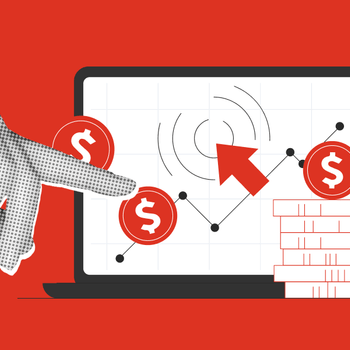Digital Marketing Strategy Fundamentals
by Chad de Lisle • March 31, 2025
A solid digital marketing strategy is non-negotiable for your brand. It’s how B2B businesses stand out, connect with their audience, and drive long-term growth. Whether you’re aiming to increase brand visibility, generate leads, or dominate your niche, understanding the core fundamentals will set you apart.
Let’s break down the essentials.
What Is a Digital Marketing Strategy?
A digital marketing strategy is your high-level roadmap. It aligns your marketing efforts with your business objectives, ensuring every campaign and tactic pushes toward a common goal. Think of it as your north star — every ad, social post, or email should serve that strategic direction.
At its core, a strategy answers:
- What are we trying to achieve?
- Who are we targeting?
- What channels will we use?
- How will we measure success?
Core Components of a Digital Marketing Strategy
A strong digital marketing strategy isn’t just a checklist; it’s a game plan that turns goals into growth and involves careful planning and intentional execution.
Here’s how to build a solid foundation:
Set Clear Goals and Objectives
Start with SMART goals that are:
- Specific: Clearly define what success looks like.
- Measurable: Track progress with quantifiable metrics.
- Achievable: Ensure goals are realistic based on resources.
- Relevant: Align with broader business objectives.
- Time-bound: Set deadlines to measure progress.
Example: “Increase qualified leads by 30% in 6 months through targeted LinkedIn campaigns.”
Know Your Target Audience
Creating accurate buyer personas is key to delivering relevant content. Use data from market research, analytics, and customer feedback.
Consider factors like:
- Demographics: Age, location, job role, industry
- Pain Points: Common challenges they face
- Communication Preferences: Social media, email, blogs
- Motivations: What drives their buying decisions
The more detailed your personas are, the more targeted and effective your campaigns will be.
Audit Your Existing Channels
Before launching new campaigns, evaluate how your current channels are performing. Identify strengths, weaknesses, and opportunities by analyzing metrics like:
- Website traffic and bounce rates
- Social media engagement
- Email open and click-through rates
- Paid ad performance
Key Questions to Ask:
- Which channels are driving the most conversions?
- Are there any gaps in your content strategy?
- How effectively are you engaging with your audience?
This analysis will guide your decision-making for future strategies.
Allocate Your Budget Wisely
A well-planned budget ensures your resources go where they matter most. Distribute funds across:
- Paid Media: PPC ads, sponsored posts, and influencer collaborations
- Owned Media: Website content, blogs, and newsletters
- Earned Media: Customer reviews, press mentions, and social shares
Keep your budget flexible, allowing adjustments based on campaign performance.
Choose the Right Channels
Different platforms cater to different audiences. Select channels based on your goals and where your audience spends time.
- B2B Marketing: Prioritize LinkedIn, Google Ads, and email marketing
- B2C Marketing: Focus on Instagram, Facebook, or TikTok
- Niche or Industry-Specific: Consider industry forums, newsletters, and publications
Integrate multiple channels for a unified brand presence.
Create a Content Plan
Developing a content plan ensures consistent messaging and a clear delivery strategy. Align content with your audience’s needs and buyer journey stages.
Content Types to Consider:
- Top of Funnel: Blog posts, videos, and social media content for brand awareness.
- Middle of Funnel: Webinars, case studies, and email newsletters to nurture leads.
- Bottom of Funnel: Product demos, free trials, and customer testimonials to drive conversions.
Create an editorial calendar to organize publishing schedules, assign responsibilities, and maintain a steady content flow.
Track KPIs and Metrics
Monitoring performance helps you refine your strategy. Choose key performance indicators (KPIs) aligned with your goals:
- Conversion Rates: Percentage of users who complete a desired action
- Cost Per Lead (CPL): How much you’re spending to acquire leads
- Customer Acquisition Cost (CAC): Total cost to gain a new customer
- Return on Ad Spend (ROAS): Revenue generated from ad campaigns
- Engagement Metrics: Likes, shares, comments, and click-through rates
Use platforms like Google Analytics, HubSpot, or Salesforce for real-time data analysis. Continuously optimize your efforts based on the insights you gather.
Key Levers in Digital Marketing Strategy
To execute your digital marketing strategy, you’ll rely on several key levers:
- Content Marketing: Establish authority by publishing valuable blog posts, whitepapers, and case studies.
- SEO (Search Engine Optimization): Optimize content to rank higher on search engines and capture organic traffic.
- Paid Media (PPC): Use targeted ads to generate leads quickly and boost visibility.
- Social Media Marketing: Engage your audience on platforms like LinkedIn, Twitter, and YouTube.
- Email Marketing: Nurture leads and build customer loyalty through personalized communication.
- Video Marketing: Leverage videos for product demos, testimonials, and thought leadership.
- Influencer & Partner Marketing: Collaborate with industry voices to expand reach and build credibility.
The key is choosing the right combination of levers based on your objectives and audience preferences.
Strategy vs. Campaigns vs. Tactics
Understanding how strategies, campaigns, and tactics work together is essential for executing successful digital marketing efforts.
Think of them as a hierarchy:
- Strategy: The foundation. It defines your long-term goals and the overall approach to achieving them.
- Campaigns: The structured, goal-oriented initiatives designed to execute your strategy. Each campaign has a clear focus, such as lead generation or brand awareness.
- Tactics: The specific actions taken to achieve the goals of a campaign. These could include creating paid ads, publishing blog content, or launching email sequences.
Example in Action
| Element | Example | Purpose |
| Strategy | Increase market share by 20% in a year | Long-term growth goal |
| Campaign | LinkedIn Lead Generation Campaign | Focused initiative to generate qualified B2B leads |
| Tactic | Publish weekly thought leadership posts | Engage the audience and drive traffic to the website |
| Tactic | Run targeted LinkedIn ads | Capture leads directly from the platform |
When aligned, these three levels ensure that your efforts are measurable, intentional, and scalable. Misalignment, on the other hand, can result in wasted resources and poor results.
🎯 Want to Know Where You Actually Stand?
If you’re serious about growing your business, let’s take a look at your current strategy—together.
We’ll break down what’s working, and what’s not, and give you a roadmap to move forward—no strings attached.
You’ll walk away with real clarity, actionable steps, and a custom plan built around your goals.





